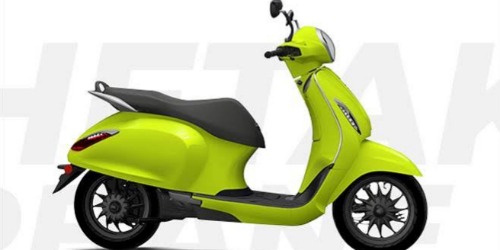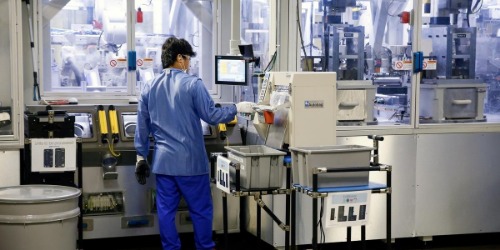IT spending to reach $3.9 trillion in 2020 globally

Worldwide IT spending is projected to total USD 3.9 trillion in 2020, an increase of 3.4 per cent from the previous calendar year, according to the latest forecast by Gartner, Inc.
Global IT spending is expected to cross into $ 4 trillion territory next year, the research firm said.
"Although political uncertainties pushed the global economy closer to recession, it did not occur in 2019 and is still not the most likely scenario for 2020 and beyond, said John-David Lovelock, distinguished research vice president at Gartner, in a statement.
"With the waning of global uncertainties, businesses are redoubling investments in IT as they anticipate revenue growth, but their spending patterns are continually shifting," he added.
Software will be the fastest-growing major market this year, reaching double-digit growth at 10.5 per cent.
"Almost all of the market segments with enterprise software are being driven by the adoption of software as a service (SaaS)," he said.
"We even expect spending on forms of software that are not cloud to continue to grow, albeit at a slower rate. SaaS is gaining more of the new spending, although licensed-based software will still be purchased and its use expanded through 2023," Lovelock added.
Growth in enterprise IT spending for cloud-based offerings will be faster than growth in traditional (non- cloud) IT offerings through 2022, Gartner said.
Organisations with a high percentage of IT spending dedicated to cloud adoption is indicative of where the next- generation, disruptive business models will emerge, it noted.
The headwind coming from a strong U.S dollar has become a deterrent to IT spending on devices and data centre equipment in effected countries.
"For example, mobile phone spending in Japan will decline this year due to local average selling prices going up as a result of the U.S dollar increasing. The U.K's spending on PCs, printers, servers and even external storage systems is expected to decline by three per cent, too," said Lovelock.
Despite last quarter showing the sharpest decline within the device market among all segments, it will return to overall growth in 2020 due to the adoption of new, less- expensive phone options from emerging countries.
"The almost USD 10 billion increase in device spending in Greater China and Emerging Asia/Pacific is more than enough to offset the expected declines in Western Europe and Latin America," said Lovelock.
- 0
- Leave a comment
Bajaj Chetak electric scooter launched, price starts at Rs 1-1.15 lakh

Homegrown two-wheeler major Bajaj Auto on Tuesday launched the electric version of its iconic Chetak scooter that had ruled the Indian two-wheeler landscape for three decades between 1972 and 2006.
With this, Bajaj also re-enters the scooter segment, a category it had ruled for much of the 70s and 80s but had then relinquished in 2006 as it shifted its focus purely to motorcycles. Priced at Rs 1 lakh for the base Urbane variant that gets drum brakes and Rs 1.15 lakh for the Premium version with disc brakes, bookings for the electric Chetak begin from Wednesday and to begin with will be available in four dealerships in Pune and 13 dealerships in Bangalore. The prices are inclusive of the subsidies applicable for electric vehicles in both the markets and exclusive of insurance and road tax. Additionally, Bajaj will also provide a home-charging station which is included in the package.
Customer can book the vehicle for Rs 2,000 in Pune and Bangalore and deliveries are expected to commence by end of February. At the heart of the new Chetak is an IP67 rated 3 Kwh Lithium-Ion battery with NCA cells. There are two driving modes on offer-Eco and Sport, with a range of 85 kilometre and 95 kilometre respectively. The battery is charged using a standard household 15 amp electrical outlet and it takes about 5 hours to charge it fully.
The company said the vehicle requires minimal maintenance with a service interval of 12,000 kilometres or one year (whichever is earlier) and comes with an overall warranty of 3 years or 50,000 kilometres (whichever is earlier) inclusive of the Lithium-Ion battery.
"The return of the legendary Chetak now in a modern electric avatar is indeed a proud moment for all of us at Bajaj Auto. From 15th Jan, 2020 onwards Chetak will be available in 2 cities and this will mark the commencement of a new era in two-wheeler mobility," said Rakesh Sharma, Executive Director, Bajaj Auto. "We are confident that Chetak will set absolutely new benchmark standards of clean tech driven, elegant and a delightful ownership experience shaping the very future of personal commuting and building hamara kal."
While a number of new entrants and startups like Ather Energy, Revolt Motors. Okinawa and Twenty Two Motors have launched electric two-wheelers in the last 2 years, Bajaj is the first established mass-market two-wheeler manufacturer to foray into this segment.
"We are engineers who do our own work. We are not a battery or a steel maker or a failed two-wheeler company. We are a company with a very rich past, a strong track record and a rich legacy. It is this credibility that gives us a solid foundation to make a foray into the future," Bajaj Auto managing director Rajiv Bajaj had said in October in New Delhi when the vehicle was first unveiled.
"Sometimes when it comes to creating new things there is anxiety whether it will work. In the context of EVs, the question is on whether the customer is ready, in charging infrastructure, and whether it is viable and practical. Nevertheless, our belief is if we are not the first or at worst second to the market then we will lose the market forever. It is with this attitude that we have decided to move into the future of EVs with the Chetak."
At its peak, the Chetak enjoyed unprecedented popularity with waiting periods exceeding 10 years and a resale value greater than its purchase price. In its 34 year stint, more than 1.3 crore Chetaks were sold in India. In the new avatar, the timeless design of the vehicle has been updated with features like LED headlight with DRLs, electronic switches, sequential scrolling LED blinkers and a large digital console intuitively displays vehicle information with crisp clarity.
The Indian government has been pushing the automobile industry towards electric mobility and policy to move to 100 per cent e-mobility for two-wheelers between 2023 and 2025 was also mooted earlier this year. It was, however, disbanded following intense pushback from the industry. Bajaj was at the forefront in that.
"My only disagreement (with NitiAyog) was when a policy was proposed for a very rapid conversion to 100 per cent EVs by 2023 and 2025. Thankfully that prospect seems to have faded. But after that brahmastra was sent, 50 per cent of my thinking time was occupied by EVs since June 21," Bajaj said. "If 50 per cent of my mind is on EVs today, in reality too it will be 50 per cent soon. We are constantly trying to align ourselves with the government's policies."
Apple pushes recycling of iPhones with 'Daisy' robot to recover minerals

Apple Inc is trying to change the way electronics are recycled with a robot that disassembles its iPhone so that minerals can be recovered and reused, while acknowledging rising global demand for electronics means new mines will still be needed. The Cupertino, California-based company says the robot is part of its plan to become a "closed-loop" manufacturer that does not rely on the mining industry, an aggressive goal that some industry analysts have said is impossible.
Many mining executives note that with the rising popularity of electric vehicles, newly mined minerals will be needed on an even larger scale, a reality that Apple acknowledges.
"We're not necessarily competing with the folks who mine," said Lisa Jackson, the company's head of environment, policy and social. "There's nothing for miners to fear in this development."
Inside a nondescript warehouse on the outskirts of Austin, Texas, Apple's Daisy robot breaks apart iPhones so that 14 minerals, including lithium, can be extracted and recycled.
Apple is already using recycled tin, cobalt and rare earths in some of its products, with plans to add to that list. The company last month bought the first commercial batch of carbon-free aluminum from a joint venture between Rio Tinto and Alcoa.
Daisy, less than 20 yards in length, uses a four-step process to remove an iPhone battery with a blast of -80 Celsius (-176 Fahrenheit) degree air, and then pop out screws and modules, including the haptic module that makes a phone vibrate.
The components are then sent off to recyclers for the minerals to be extracted and refined. Daisy can tear apart 200 iPhones per hour. Apple chose the iPhone to be the first of its products that Daisy would disassemble because of its mass popularity, said Jackson.
Apple is considering sharing the Daisy technology with others, including electric automakers. Daisy does have its skeptics, including some in the tech world who want the company to focus more on building products that can be repaired, not just recycled.
"There's this ego that believes they can get all their minerals back, and it's not possible," said Kyle Wiens, chief executive of iFixit, a firm advocating for electronics repair, rather than replacement.
That may partially explain why the mining industry isn't worried.
"Apple is in an enviable position, because they can do this," said Tom Butler, president of the International Council on Mining and Metals, an industry trade group. "Not everyone else will be able to follow suit."
Govt identifies 931 GST fraud cases via data analytics

Using advanced technology to tap into fraudulent GST refund claims, the Department of Revenue has identified 931 such cases through data analytics. Following detection of a high number of fraud refund cases, the Centre has now asked the GST data analytics wing to check all past and pending refund claims filed across the country for inverted duty structure.
As per sources, refunds worth over Rs 28,000 crore are said to have been filed for inverted duty structure by over 27,000 taxpayers so far this fiscal year.
Taxpayers who have purchased goods from tax evading non-filers would face further scrutiny - a task that's being reviewed by Union Revenue Secretary Ajay Bhushan Pandey.
The data analytics wing has also been asked to keep an eye on the modus operandi of unscrupulous refund claimants or fly-by-night/shell business entities availing fake ITC.
As per information, the GST formations have booked 6,641 cases involving 7,164 entities till November last year and recovered around Rs 1,057 crore. Most cases has been filed in Kolkata zone, followed by Delhi, Jaipur and Punchkula (Haryana).
Samsung Galaxy Fold 2 is coming soon: Everything you need to know

Samsung has a busy first quarter lined up for 2020, with the company expected to launch a number of new smartphones across multiple budget segments in the first few months of the year. While most of these devices are highly awaited, it is arguably the flagship S11 series and the rumoured Galaxy Fold 2 that are the most awaited of the pack.
While much is already known about the upcoming S11 (or should we call them S20) smartphones, it's the Galaxy Fold 2 that still very much remains shrouded in mystery. Despite a number of rumours and leaks surrounding it, we remain nowhere close to forming an accurate picture about the Galaxy Fold's successor.
Galaxy Fold 2: When will it be launched?
While the company hasn't confirmed anything yet -- and has refrained from letting any information on the matter pass through its official channels -- rumours do say the next foldable phone from Samsung could be unveiled alongside the Galaxy S11 at its unpacked event in February 2020.
There have also been reports that the device could probably be launched before the event, however, that appears highly unlikely. For now, it appears the device will indeed be unveiled in February only and then launched in important markets around the globe at later dates in the year.
Galaxy Fold 2: What will the design be like?
The original Galaxy Fold was launched in a rather unique form factor with a smaller 4.6-inch display on the outside and a primary 7.3-inch foldable panel inside the phone. And it is believed that the Galaxy Fold 2 will also follow a similar form factor.
However, the biggest change that the Galaxy Fold 2 is expected to see is a smaller crease running through the middle of the display of the phone. This would not only make the phone more durable but also more impressive to use.
The company is tipped to achieve this by employing "an ultra-thin glass cover" instead of plastic, on the panel. Interestingly, in doing so, the Galaxy Fold 2 will also become the first phone in the world to do so. The "ultra-thin glass cover", which has previously been called UTG (Ultra-Thin Glass) solution in a separate report, will make the foldable display look flatter and also reduce the wrinkle.
There are also suggestions that Samsung could bring a Moto Razr-like clamshell design flaunting foldable phone this year. However, this one is expected to be a completely different device from the Galaxy Fold 2, which will be more expensive and also feature a bigger foldable panel on it.
Galaxy Fold 2: What's under the hood?
Although much isn't known about the core hardware that Samsung could use to power the Galaxy Fold 2, we expect the phone to bring top-of-the-line flagship specs once it's unveiled in the market. As such, the Galaxy Fold 2 could bring with it a Galaxy 865 SoC at the heart of it and pair it to upwards of 8GB of RAM and at least 128GB of storage in its entry variant.
The Galaxy Fold 2, however, could bring fewer lenses compared to the Galaxy Fold. While the latter brought with it a total of 6 cameras, reports suggest the Galaxy Fold 2 could get only three lenses, with a single camera placed outside and a dual-camera set-up used inside the phone.
Apart from this, the Galaxy Fold 2 is again reported to miss out on the headphone jack and instead bring only a Type-C port for charging, as well as, playing music through the phone. The phone is also expected to get Samsung's Android 10 based One UI 2 operating system to boot out of the box.
Galaxy Fold 2: What will be the price?
Much like the Galaxy Fold, the Galaxy Fold 2 won't come cheap. Reports suggest the phone could come closer to the $2000 mark, with the Foldable flip phone from Samsung retailing as the more affordable fordable device in the line-up at around the $1500 mark.


